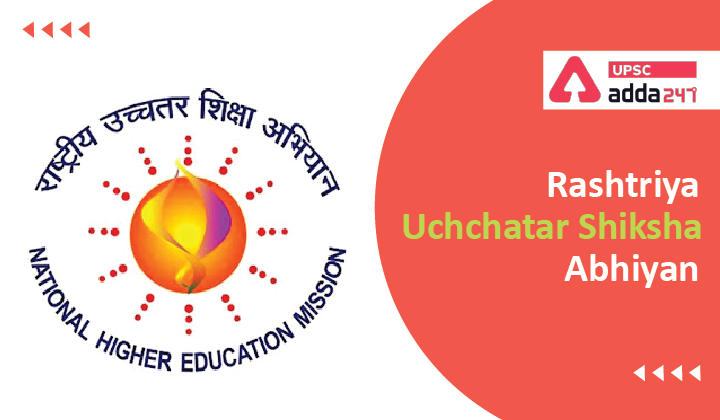Table of Contents
Rashtriya Uchchatar Shiksha Abhiyan : Relevance
- GS 2: Government policies and interventions for development in various sectors
Rashtriya Uchchatar Shiksha Abhiyan : Context
- Recently, Ministry of Education has approved the scheme of Rashtriya Uchchatar Shiksha Abhiyan (RUSA) for continuation till 31.03.2026.
Rashtriya Uchchatar Shiksha Abhiyan : Key points
- The proposal entails an expenditure of around Rs. 13000 crores.
- It has been envisaged to support around 1600 projects under the new phase of the scheme.
RUSA 2022
- New RUSA targets: to reach out the unserved, underserved areas; remote/ rural areas; difficult geographies; LWE areas; NER; aspirational districts, tier-2 cities, areas with low GER etc., and to benefit the most disadvantaged areas and SEDGs.
- Implement NEP: The new phase of the scheme has been designed to implement some of the recommendations and aims of the New Education Policy, which suggests some key changes to the current higher education system to revamp and re-energize it and thereby deliver quality higher education, with equity and inclusion.
- Support to states: Under the new phase of the scheme, State Governments will be supported for Gender inclusion, Equity Initiatives, ICT, Enhancing employability through vocationalisation & skill upgradation.
- States will also be supported for creation of new Model Degree Colleges.
- State Universities will be supported for Multi-Disciplinary Education and Research.
- Grants will be provided for strengthening both accredited and non-accredited Universities and Colleges for undertaking various activities including teaching-learning in Indian languages.
About RUSA
- Rashtriya Uchchatar Shiksha Abhiyan (RUSA) is a Centrally Sponsored Scheme (CSS), launched in 2013.
- It is aimed at providing strategic funding to eligible state higher educational institutions.
- It is operating in mission mode for funding the state government universities and colleges to achieve the aims of equity, access and excellence.
RUSA objectives
- Improve the overall quality of state institutions by ensuring conformity to prescribed norms and standards and adopt accreditation as a mandatory quality assurance framework.
- Usher transformative reforms in the state higher education system by creating a facilitating institutional structure for planning and monitoring at the state level, promoting autonomy in State Universities and improving governance in institutions.
- Ensure reforms in the affiliation, academic and examination systems.
- Ensure adequate availability of quality faculty in all higher educational institutions and ensure capacity building at all levels of employment.
- Create an enabling atmosphere in the higher educational institutions to devote themselves to research and innovations.
- Correct regional imbalances in access to higher education by setting up institutions in unserved & underserved areas.
- Improve equity in higher education by providing adequate opportunities of higher education to SC/STs and socially and educationally backward classes; promote inclusion of women, minorities, and differently abled persons.
RUSA targets
- RUSA seeks to increase the Gross Enrolment Ratio of the country to 30% by 2020.
- It also seeks to increase the spending on higher education by the State Governments.
- The scheme, in its 2nd phase (2017 – 2020), aims at creation of 70 new model degree colleges and 8 new professional colleges; Enhancing quality and Excellence in 10 select State universities and 70 autonomous colleges, providing infrastructural support to 50 universities and 750 colleges etc.
- Improving access, equity and accessibility of higher education in Slates through reforms such as academic reforms, governance reforms, affiliation reforms etc.
- Improve equity in higher education by providing adequate opportunities of higher education to socially deprived communities; promote inclusion of women, minorities, SC/ST/OBCs and differently abled persons.
- To identity and fill up the existing gaps in higher education, by augmenting and supporting the State Governments’ efforts.
- Promote a spirit of healthy competition amongst states and institutions to excel in quality higher education, research and innovation.





 TSPSC Group 1 Question Paper 2024, Downl...
TSPSC Group 1 Question Paper 2024, Downl...
 TSPSC Group 1 Answer key 2024 Out, Downl...
TSPSC Group 1 Answer key 2024 Out, Downl...
 UPSC Prelims 2024 Question Paper, Downlo...
UPSC Prelims 2024 Question Paper, Downlo...
